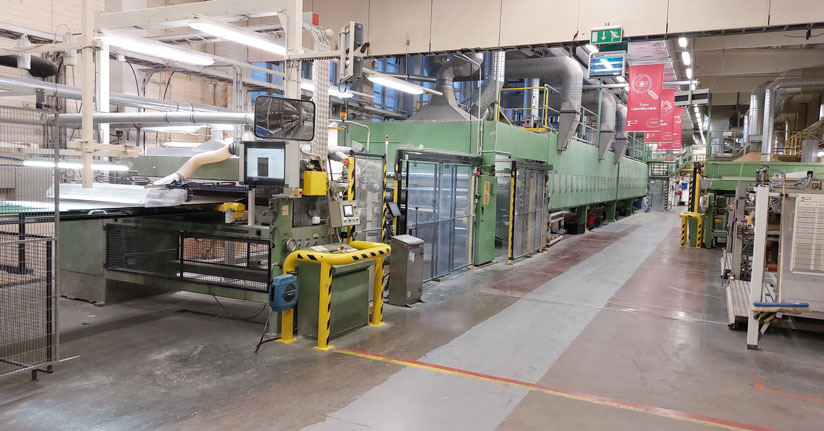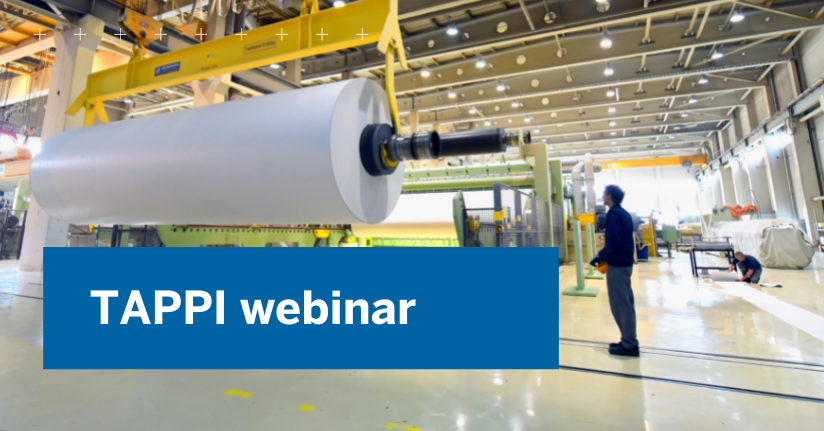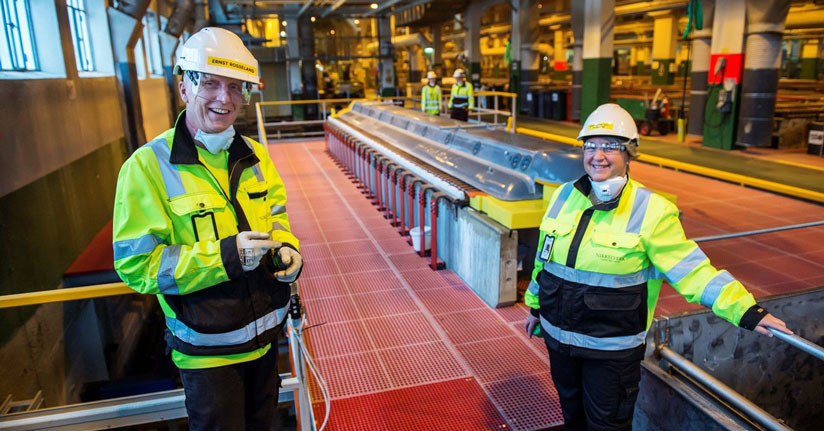Let’s meet at MIAC in Italy!

Trimble Wedge is sponsoring the MIAC 2023 which is the number one event for the paper and packaging making industry in Italy. MIAC will take place in Lucca, October 11-13, 2023.
At MIAC you can meet our process data analytics experts Jürgen Missel, Matti Häkkinen, and Teemu Möykkylä to discuss if Wedge could be the system for your process improvement.
MIAC also offers an excellent opportunity to learn from your peers. We recommend you not to miss Eugenio Ciucani’s (Holmen Iggesund Paperboard) presentation, “Online data analysis for process optimization”. The practical presentation is taking place on Friday October 13 at 11:50 at the MIAC Conference Room.
Focus on your core

Running a complex large-scale industrial operation requires a vast amount of expertise and an equal amount of good judgment, especially when it comes to deciding which functions to fulfill in-house and those best to outsource. In the end, it is not possible to excel in every function on your own – recruiting the best talents, developing knowledge, systems and processes in every area is too great a challenge to any company. Choices must be made.
While each sector, business and company culture will vary, a reliable guiding principle to follow when considering these choices is: Focus on your core. Keep all functions that are core to your business in-house as these operational areas are vital to ensuring your organization’s competitive advantage. For example if you’re running a paper or pulp plant, don’t hand over control of any functions directly related to managing the final product. Non-core functions, however, can be considered – and, indeed, may be executed more efficiently when outsourced. Now, let’s consider some of the key questions that come up for executives as they analyze these core decisions.
How do I evaluate which functions are core to the operation?
Assuming your company has taken the strategic decision to keep manufacturing in-house, you’ve already taken the first step. You most likely have several performance indicators, like the OEE (Overall Equipment Effectiveness), in use to help track your operation’s ability to compete. As long as your R&D, process engineering and quality departments function seamlessly and in tandem in order to minimize costs, optimize the production performance, improve quality or add flexibility and agility, your company will maintain a good position. So,as a guiding principle, consider any processes and functions that have a direct impact on your key performance indicators as sacred ones, i.e. your core functions.
In terms of performance indicators, keep in mind that being in the driver’s seat will enable successful understanding, accurate measurement and your ability to effectively contribute to an efficient operation. Understanding and measuring are easy – but the latter can be more challenging as it requires serious process and quality engineering.
For example, take any continuous development framework and you will notice that the first step of the process will be intertwined with information gathering, data collection or data/process analysis. The same applies to developing performance – the process needs to be structured and data-driven right from the beginning all the way to communicating and implementing the findings. The talented and curious people in charge of that process, i.e. engineers, can be considered the soul and incarnation of your competitive edge.
How does Trimble support industrial plants in making these important decisions?
At Trimble, we work in the field of process analysis and diagnostics. We have supported many companies contemplating in-house and outsourced approaches to process and quality development. While some companies proudly maintain and develop their process knowledge in order to improve the performance, there are others that have chosen to outsource troubleshooting and process development. In our experience it is the first group with the brightest, and most sustainable, future.
The second group are essentially asset owners. This includes industrial plants that opt to outsource their efficiency development to automation and algorithms. They implement cutting-edge technology and let it take care of challenging tasks such as optimizing the process. There is some merit to this rationale, however, a system is only as good as its configuration and embedded models. Furthermore, all systems and equipment are available to everyone.
In the end, the way to make a true impact comes down to how you use and configure the best available technology. For today’s most successful operators, we have discovered that this decision should be based on protecting – in-house – those technologies, processes and proprietary intel that contains the core knowledge of running your business.
 Want more insights?
Want more insights?
Our sales team is full of data analysis experts ready to help you. Learn more about Wedge industrial data analytics tool.
Let’s meet at Digitalisation in mining Europe event in Stockholm

Did you know that Wedge also works great for the metal and mining industries? We will attend the Digitalisation in mining Europe event in Stockholm, Sweden on 29-30 August. Welcome to discuss how we can help you make better use of your process data.
Teemu Möykkylä, Matti Häkkinen and Jürgen Missel are looking forward to meeting you!
Meet us at ZELLCHEMING-Expo 2023

We would like to welcome you to join us at ZELLCHEMING-Expo in Wiesbaden, Germany June 20-22, 2023.
Zellcheming is the trade fair to learn the latest developments in the European paper, pulp, and fiber industry and the perfect platform for professional exchange between technology users and suppliers.
We invite you to take the great opportunity to meet our industrial data analytics experts Jürgen Missel, Matti Häkkinen, and Teemu Möykkylä to discuss if Wedge could be the system for your process improvement.
Don’t miss Matti Häkkinen’s presentation Combining CD-cross Profile Measurements with Process Data on Tuesday 20 June at 11.30 a.m.
Formica IKI selects Trimble Wedge for data analytics

Formica Group, the world’s largest manufacturer of high-pressure laminates (HPL), selects Trimble’s industrial data analytics system Wedge to improve its Formica IKI Oy plant performance in Kolho, Finland.
“We have raised the bar on sustainability. Surrounded by a group of material technology companies, giving us access to tools and technology, we are confident we can accelerate our sustainability improvement trajectory. Major improvements have been made during the last couple of years. As part of the path toward carbon neutrality, we have invested in measuring our process performance, and with Wedge, we are able to take the most out of it in process optimization and development,” says Jani Kattilakoski, Plant Manager of Formica IKI Oy Kolho.
IKI-manufactured high pressure laminate consists of layers of wood-based fibers and usually one decorative paper on the surface. Impregnated with thermosetting resins, the papers are collated and compressed into a single, homogeneous sheet under high pressure and temperature. The resulting laminates provide a high-performance surface with excellent durability and scratch resistance but maintaining flexibility to allow the creation of curves and shaped surfaces.
Register for TAPPI webinar on October 27, 2022

We are pleased to invite you to TAPPI webinar we sponsor on Thursday, October 27, at 11 am (ET). The topic is the always interesting Data-Driven Decision Making with Process Analytics – Making sense of big data in the pulp and paper industry presented by Dr Peter Hart from WestRock. The webinar is hosted by one of our Wedge specialists, Leigh Kinne.
The event is free and does not require TAPPI membership; registration is required.
Glencore Nikkelverk selects Trimble’s Wedge for industrial data analytics

Glencore Nikkelverk, one of the largest nickel refineries in the western world, has selected Trimble’s Wedge industrial data analytics system to improve its process plant performance.
“Nikkelverk refinery has a high automation level and modern process information system and we are continuously generating a lot of valuable process data. Integrating Wedge to our plant systems opens a new era of process optimization, troubleshooting disturbances, and development. This certainly represents a great example of our ongoing digitalization efforts,” said Kai Johansen, Chief Information Officer at Glencore Nikkelverk.
Wedge is powerful data-mining software that provides users with tools to visualize process and quality data, cleanse the data, compensate for process delays, analyze data, and diagnose dependencies and root causes. Wedge can be used widely at industrial plants; from site managers to process operators.
“The Wedge system has a lot of potential for our plant’s performance improvement by making the analytics work easier. It also enables a completely different level of process data utilization with current resources. One of the gains we expect from this is decreased chemical usage per tonn Ni produced, which is good for both our economy and our environmental footprint,” said Eirik Djuve, Process Metallurgist, Glencore Nikkelverk.
With customers in over 20 countries, Glencore Nikkelverk is the first to deploy Trimble’s Wedge in Norway.
Game-changing industrial revolutions… are usually dead slow

Have you ever been told that in the near future there will be a game-changing system that will revolutionize the process industry? Indicating that things will evolve dramatically and quickly to the next level of performance?
We have.
But when we look back on the history of industrial development in the long-term perspective, the progress is not a series of sudden leaps.
Take steady steps towards better processes
Of course, changes can sometimes happen quickly. Usually as a consequence of a catastrophe or brutal distraction leading to a performance drop and chaos in the short term. These unwanted events can accelerate development, as change becomes necessary for survival.
But you don’t want to wait for a catastrophe to force you to change, do you?
The sustainable way to develop is to do things a little bit better, every day. In this more subtle method, you won’t necessarily see notable results in a day or a week, but you can make a big difference in a year or two. It’s a common misconception to overestimate the impact of change in the short term and underestimate the value of slower, long-term development.
Examples of industrial revolution in process control
One of the early breakthroughs for process control were the water control valves in the 3rd Century BCE. PID (proportional-integral-derivative) control was developed in the 1910s, and computers started to control industrial processes in the 1970s. Today, we are still using valves, PID controllers, and computers, and the process control market continues to grow.
Along with process control and automation development, process analytics is also evolving as part of continuous performance improvement. More and more data is analyzed faster than ever, and data analytics is also more and more automatic. Yet, there are principles that have remained the same for decades, centuries, or even millennia.
Another great example of slow revolution is the huge improvement of energy efficiency in the process industry that has taken place in Europe in the last 40 years. Very little has happened overnight, but very much in the longer term, almost unnoticed.
Every step towards better performance matters, you just have to take the steps.
 Want more insights?
Want more insights?
Our sales team is full of data analysis experts ready to help you. Learn more about Wedge industrial data analytics tool.
Meet us at AVEVA PI World in Amsterdam

We would like to welcome you to join us at AVEVA PI World in Amsterdam May 16-19, 2022.
AVEVA PI World offers a great opportunity to network and learn from the extensive AVEVA and PI System communities. AVEVA have acquired OSISoft, so you might know it better by that name.
At AVEVA PI World you will have a great opportunity to meet our industrial data analytics experts Jürgen Missel, Matti Häkkinen, Teemu Möykkylä, and Jari Suihkonen to discuss if Wedge could be the system for your process improvement.
Meet us at TAPPICon in Charlotte
Trimble Wedge is sponsoring the TAPPICon event which is an in-person event for the paper making industry. TAPPICon will take in place in Charlotte, North Carolina April 30 – May 4, 2022.
We are also excited to announce that WestRock will be presenting peer-reviewed findings about Trimble Industrial Data Analytics (Wedge) at TAPPICon May 3, 8:00-10:00 during the Paper Fundamentals track. The presentation is under title: “Determining Operating Variables Which Impact Internal Fiber Bonding Using Wedge Statistical Analysis Methods”.
Looking forward to meeting you at TAPPICon!